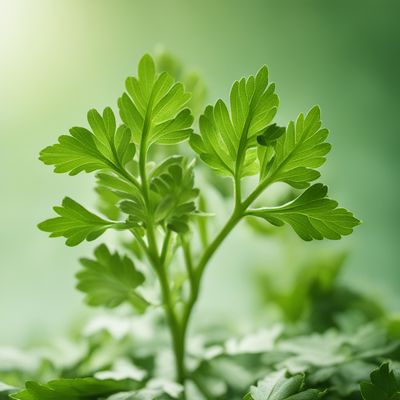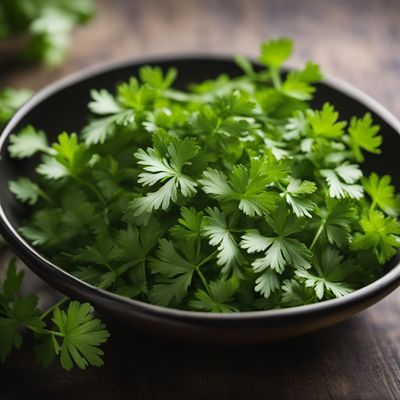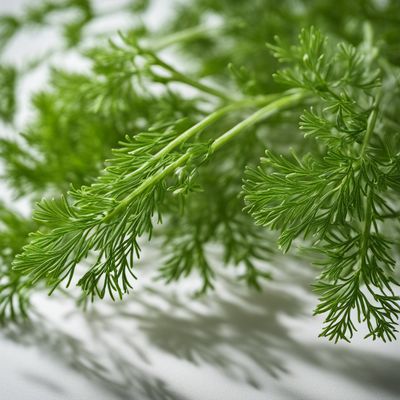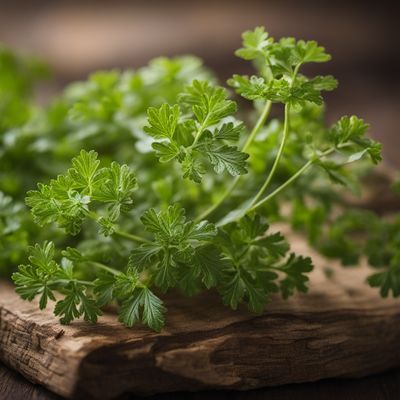
Ingredient
Angelica (leaves and stems)
The Heavenly Herb
Angelica is a herbaceous plant known for its tall stems and large, serrated leaves. It has a distinct herbal aroma and a slightly bitter, earthy taste. The leaves are often used as a garnish or infused into teas, while the stems can be candied or used in confectionery. Its vibrant green color and unique flavor make it a delightful addition to both sweet and savory recipes.
Origins and history
Angelica has a rich history dating back to ancient times. It was believed to have medicinal properties and was used by the Greeks and Romans for various ailments. In medieval Europe, it was considered a holy herb and was used to ward off evil spirits. Today, it is primarily cultivated in northern Europe and Asia.
Nutritional information
Angelica is a good source of vitamins A and C, as well as minerals like potassium and calcium. It is also low in calories, making it a healthy addition to dishes.
Allergens
There are no known allergens associated with angelica.
How to select
When selecting angelica, look for fresh, vibrant leaves and firm stems. Avoid any signs of wilting or discoloration. The leaves should have a strong aroma, indicating their freshness.
Storage recommendations
To store angelica, wrap the leaves and stems in a damp paper towel and place them in a plastic bag. Store in the refrigerator for up to one week. Alternatively, you can freeze the leaves by blanching them briefly in boiling water, then transferring them to an airtight container or freezer bag.
How to produce
Angelica can be grown in a garden or in pots. It prefers moist, well-drained soil and partial shade. Regular watering and fertilization will help it thrive.
Preparation tips
Angelica leaves can be used as a garnish for salads, desserts, and cocktails. The stems can be candied and used as a decorative element in cakes and pastries. Angelica can also be infused into syrups, teas, and liqueurs for a unique herbal flavor.
Culinary uses
Angelica is commonly used in Scandinavian, French, and German cuisines. It is often found in traditional dishes like bitters, liqueurs, and herbal teas.
Availability
Angelica is commonly available in northern Europe and Asia.
More ingredients from this category » Browse all

Fennel leaves
The Fragrant Herb: Unveiling the Delights of Fennel Leaves

Pimpernel
The Scarlet Beauty: Pimpernel's Vibrant Flavors

Lovage leaves
The Herbaceous Elixir

Coriander leaves
The Vibrant Herb: Unveiling the Magic of Coriander Leaves

Dill leaves
The Delightful Herb: Dill Leaves

Salad burnet
The Refreshing Herb

Sweet cicely
The Delicate Herb: Unveiling the Secrets of Sweet Cicely

Sorrel
The Tangy Herb: Unveiling the Secrets of Sorrel

Herb of grace
The Divine Herb: Unveiling the Secrets of Herb of Grace

Culantro leaves
The Vibrant Herb: Culantro Leaves

Fenugreek leaves
Aromatic Herbaceous Delight

Celery leaves
The Unsung Heroes: Exploring the Versatility of Celery Leaves